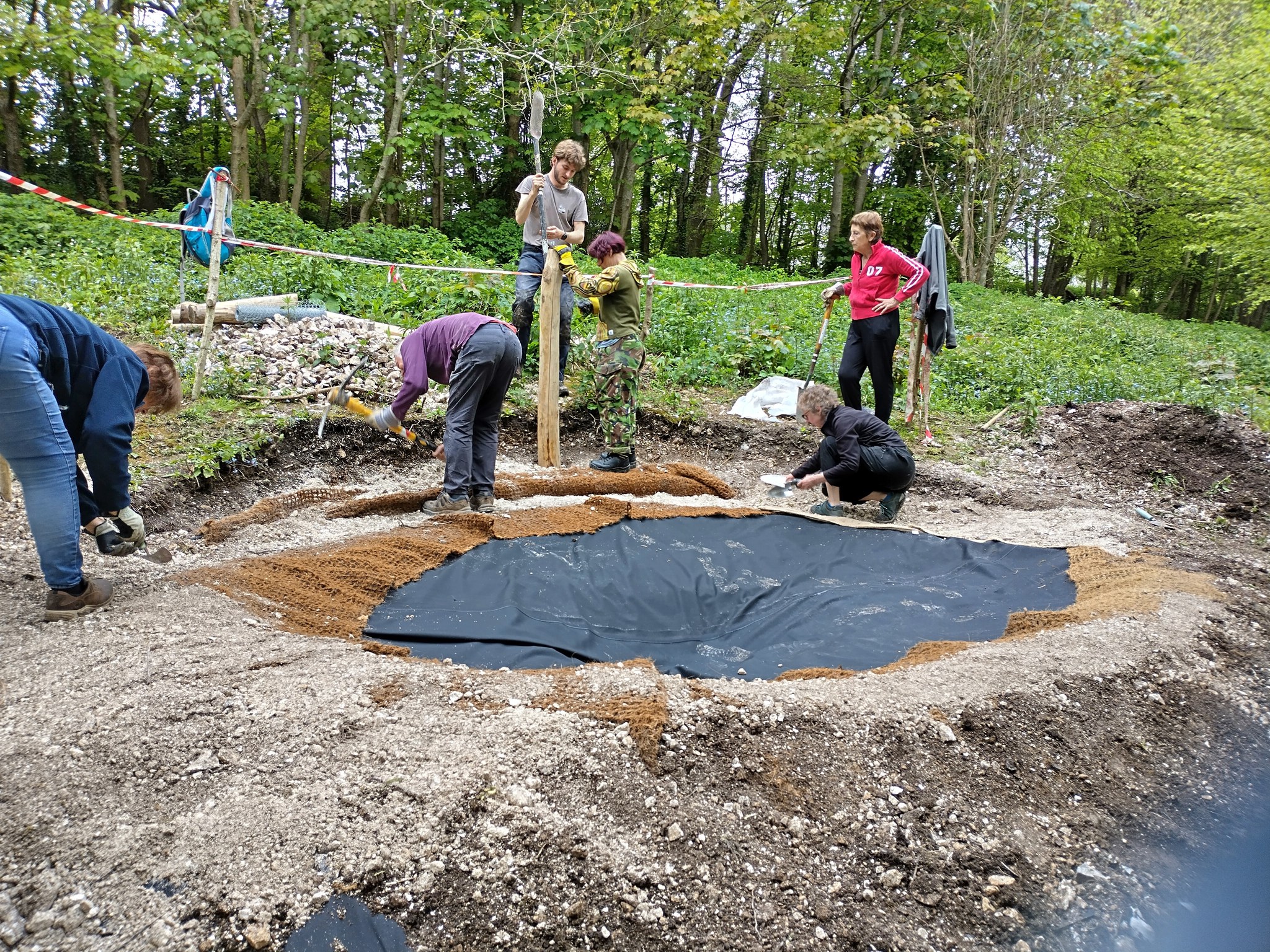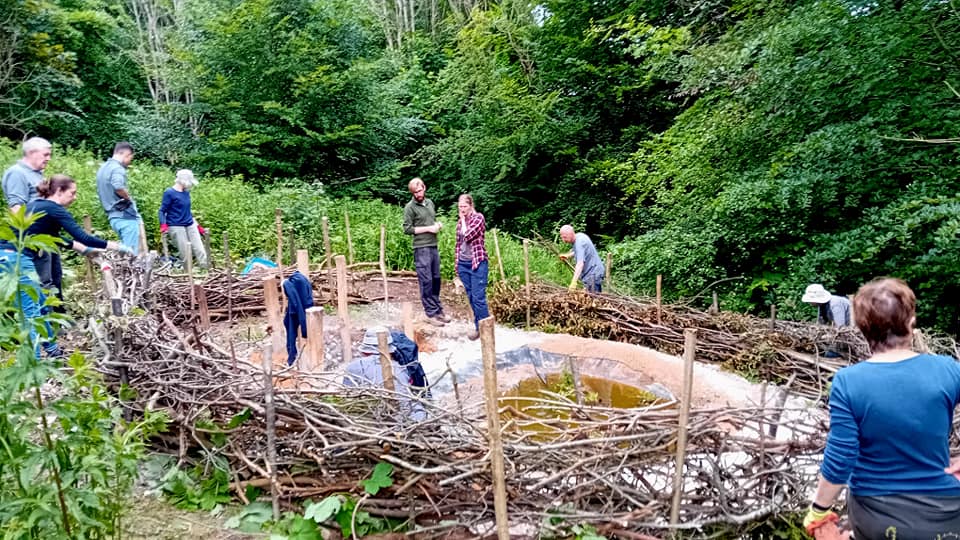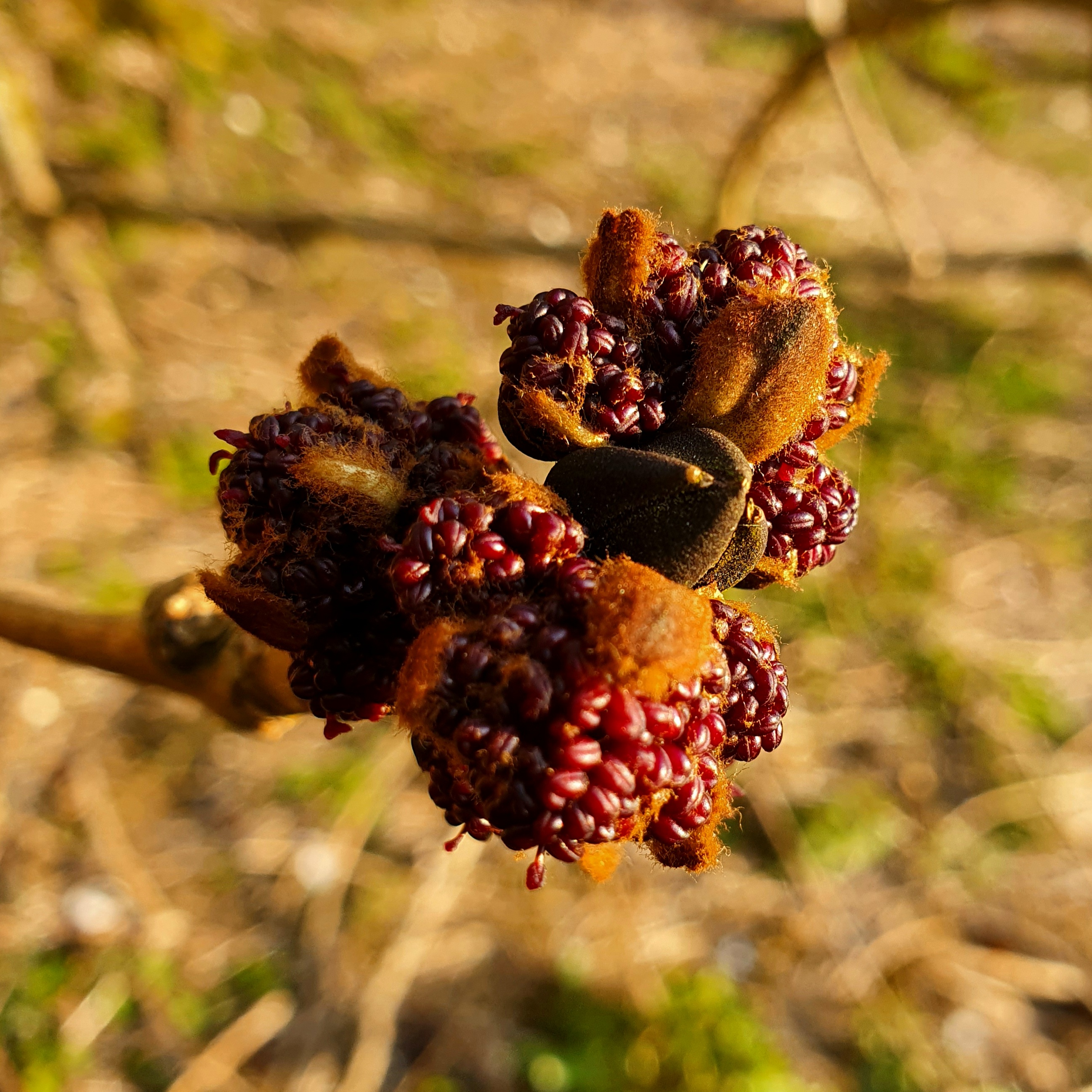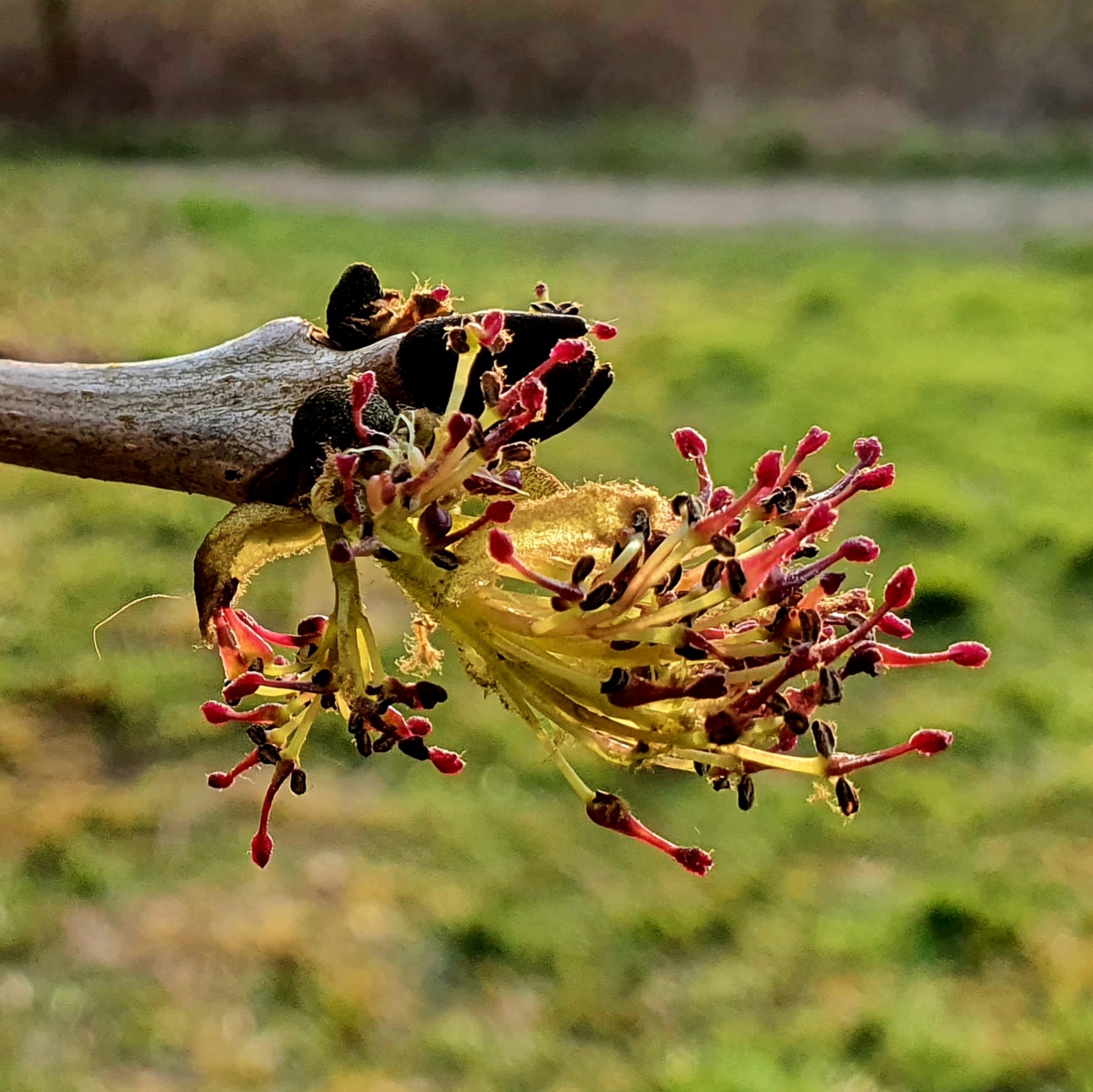|
|
|
Recent activities and news
|
|
|
Wildlife
pond in Tennis Glade
|
|

|
An exciting new project in 2024 has been
working with Froglife to create a wildlife pond in Tennis Glade in
Hollingbury Wood. This pond is one of a series of local ponds that have
been created by Froglife, who have worked with local groups and schools
using National Lottery funding.
|
|
After the plans were approved and permission
granted by the Council, work began in March. This was a big undertaking
requiring clearing the site, a lot of digging, installing a liner, building
a revetment to hold back the soil, and constructing a perimeter dead hedge.
The work was accomplished by volunteers on scheduled monthly work days and
also on additional days.
|

|
|
Specially selected native plants were
added to oxygenate the pond. Work was completed in June 2024, and the good
news is that life has already starting to appear in the pond in the form
of mosquito larva and we will be monitoring to see how long it takes for
amphibians to find the new pond. It is particularly important that non-native plants
are not introduced, as they could become invasive. It is also important
that frogspawn is not ‘donated’ to the pond as it could potentially carry
disease.
|
|
Ash
dieback
|
|

Burstead Wood - ash bud
|
In
2012 the spores of this fungal pathogen were found on Ash trees in the
south-east and it has now spread to all counties of England. It is
thought that the disease arrived on imported nursey stock from Europe, but
the spores could also have been blown across the channel. Unfortunately,
some of the Ash trees in our woods have already succumbed and others are
showing signs of the disease.
As
there is a high percentage of Ash in our woods we sought further
clarification from the Council’s arboriculture team to carry out a survey
and assess the situation.
|
|
The newly appointed Ash Dieback Officer
for Brighton Council has now assessed the extent of the problem in the
woods. As we suspected, there is a lot of Ash Dieback, particularly in
Burstead Woods. The Council began to clear the affected trees in November
2023 which will dramatically change our woodland landscape. Although
very sad it will give us an opportunity to plant a more mixed woodland and
create new glades. Some of the beautiful veteran Beech trees will be
more prominent, and there will be plenty of wood piled on the ground for
our decomposers.
|

Burstead Wood - ash flower
|
|
|
|
|
|
|
|
Friends group and woodland projects
|
|
Friends
of Hollingbury and Burstead Woods – 30th anniversary in 2021
|
|
The Friends of Hollingbury and Burstead Woods
group was formed in 1991 and we celebrated 30 years of existence in October
2021. Our Chair, Peter Jarman, gave a speech reminding us of the history of
the group which was formed after the 1987 Great Storm. Virtually all the
Beech trees blew down that night and it was obvious that there was an
opportunity to manage the area as new vegetation grew, creating glades to
allow more light in and increase biodiversity, as well as keeping as many
fallen trees as possible to decompose naturally. A small local group
got together, discussed their ideas with the Council, and FHBW was formed! The
woods are completely different now; new trees have grown up, the glades
have matured and are full of wildflowers, and new paths have been created
so that people can enjoy the area. FHBW itself has grown too and is
now a large volunteer group with about 60 members. We look forward to
celebrating more milestones in the future.
|
|
|
|
Chalk
banks
Our
Friends of Hollingbury and Burstead Woods group created a south-facing
chalk bank at the top end of Hollingbury Park just below the golf club access
road. The purpose of this bank is to encourage the growth of downland
wildflowers which support some of the rarer downland butterflies and
bees.
|

|
|
We planted seeds and wildflower plugs
into artificially created piles of chalk, and were extremely pleased that
by mid-summer the banks were a riot of gorgeous colours with red poppies,
yellow corn marigolds, white ox-eye daisies and blue cornflowers
|
Hollingbury Woods - chalk banks
|
|
|
|
|

|
Hedges
Our
group planted a long hedge along the golf club access road. If you walk
along the hedge from east to west, you'll see the difference between the
oldest part, which is well established, and the newer sections near the
recycling bins off Ditchling Road. We have also erected a fence along the
southern boundary of Hollingbury Woods in Hollingbury Rise West. This
attracted good feedback from local residents who said they appreciate the
work we do.
|
|
|
|
|
Additionally, we maintain the height of
the Elm hedge that runs alongside Ditchling Road. We do this because the
Bark Beetles that spread Dutch Elm disease fly at a height of around 9
metres so trees above this height are more likely to get the disease. So
far the hedge has remained disease free.
|
|
|
|
|
|
South
Downs National Park
The
boundaries of FHBW woods have not, we think, ever been formally
defined. However, in practice we have taken the road to the Golf
Clubhouse as marking the northern limit of Hollingbury Woods, and we have
not been active beyond the east-west path at the northern end of Burstead
Woods. In discussions with the Council and Hollingbury Golf Club, we
were given the authority to carry out woodland management activities in
these two further areas. As each of these areas fall within the boundary of
the South Downs National Park, we were delighted.
|
|
National
Park Wood – Hollingbury Wood - Tree planting and new coppice
To
the north of the golf club access road, we defined a path, planted
bluebells, cleared a glade, planted a number of native trees, and planted a
hazel coppice.
|

|
|
|
|

|
Butterfly
Glade – Burstead Wood – Clearance and wildflower planting
A
new circular path was built by this new glade at the north end of Burstead
Wood. This glade is in an especially sunny part of the wood, and it should
attract numerous butterflies. We’ve cleared some of the growth, leaving the
nettles in place, and planted native wildflowers that are beneficial to
butterflies.
|
|
|
|
|
|
|
|
|
Woodland management aims
A
management plan for Hollingbury and Burstead Woods was created by FHBW in
conjunction with Brighton and Hove City Council in early 2012. See details
on the Council website.
http://www.brighton-hove.gov.uk/content/leisure-and-libraries/parks-and-green-spaces/hollingbury-woods-and-burstead-woods-management
The
management goals are to:
·
Maintain
the woodland
·
Support wildlife
·
Balance the woodland tree population
·
Conserve and enhance the natural beauty of the woodland
·
Encourage public awareness and enjoyment of the woods
·
Enable responsible public access to the woods
The
key management themes are:
· Creating
a butterfly glade and new path at the north end of Burstead Woods in the
South Downs National Park
·
Increasing the woods slightly at the edges of Hollingbury Park
to encourage more wildlife
·
Increasing wildlife habitat by felling a few larger trees due
to the reduced amount of lying dead wood
·
Safeguarding and nurturing a few key large old trees as
“Veterans”
·
Thinning young trees that have grown after the 1987 storm – to
increase diversity
·
Deterring litter, dumping and dog fouling – and other
anti-social behaviour
|
|